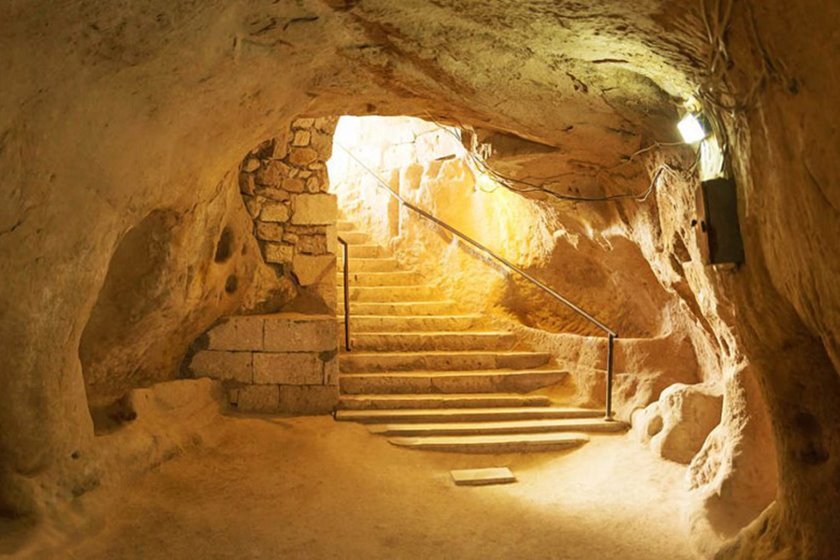Nushabad underground city to reopen doors to public

TEHRAN –After being closed for some time, the underground city of Nushabad in the central district of Aran-Bidgol county, Isfahan province, is scheduled to reopen doors to the public, a local tourism official has said.
There will be one-day tours offered during the Noruz holidays (starting March 21) to allow visitors to explore the city, Javad Sanai explained on Saturday.
Desert tourism enthusiasts could also stay in the city as a stopover destination on their way to nearby deserts, the official added.
The labyrinthine city of Nushabad is comprised of three stories of tunnels, chambers, air ducts, staircases, and canals. It is widely considered a marvel of ancient architecture and engineering.
Despite its impressive scale as the biggest underground city in Iran, the 1,500-year-old city was completely unknown until a decade ago, when a resident of a village nearby stumbled upon a tunnel while digging a well in his home.
What was discovered was a sprawling underground city set between three to 18 meters deep. The construction of this man-made subterranean city, called Ouee (or Ouyi), dates back to the Sassanid era (224 CE–651).
Inhabitants would dig underground chambers as hideout spots for women, children, and the elderly in frequent attacks by foreign invaders.
Over the years, the individual chambers were amalgamated, and air ducts, water pipes, storage spaces, and toilets were all built—creating a sustainable underground city in which ancient Persians took refuge in times of war. Each family had a room of sorts, with a tunnel running down the length of these rooms, similar to a hotel hallway.
The city could also be used as a shelter for the desert’s summer heat as the remarkable complex of tunnels originally grew up around a freshwater spring, credited with supplying delicious, crystal-clear water. Only part of the tunnel system is open to visitors today, and those parts are often subject to flooding.
The underground structure included several ingenious devices to trap and ambush hostile intruders, such as curving corridors and disguised pits covered with stones. The tunnels, which were put to good use during the Mongol invasion in the 13th century, worked particularly well as an emergency shelter because there were several entrances to the underground chambers, some of which surfaced within the town’s houses.
The underground city was eventually abandoned in the 1920s, however, it is promoted as one of the main tourist attractions in the region nowadays.
Nushabad underground city was inscribed on the National Heritage list in 2006.
Iran is a haven for ancient troglodytic architecture which is somewhat forgotten, though they are filled with life and creativity. The northwest Kandovan village is one of the most famous examples of troglodytic architecture in the country; its ice-cream cone-shaped homes resemble that of Turkey’s Cappadocia.
In October 2018, the country hosted the 3rd International Troglodytic Architecture Conference in which tens of experts, researchers, and academia discussed troglodyte-associated architecture, culture, and technology.
ABU/AM
Leave a Comment